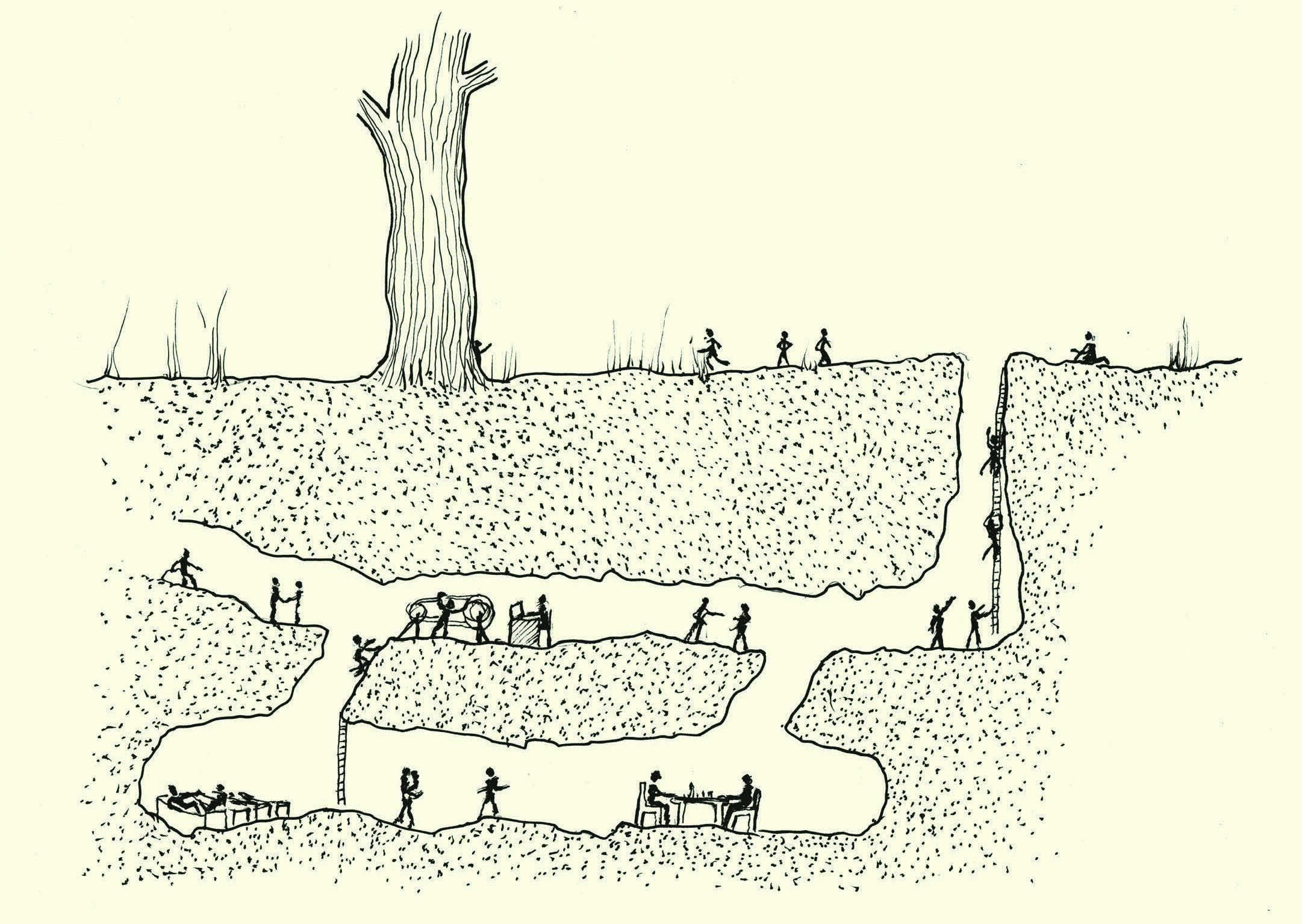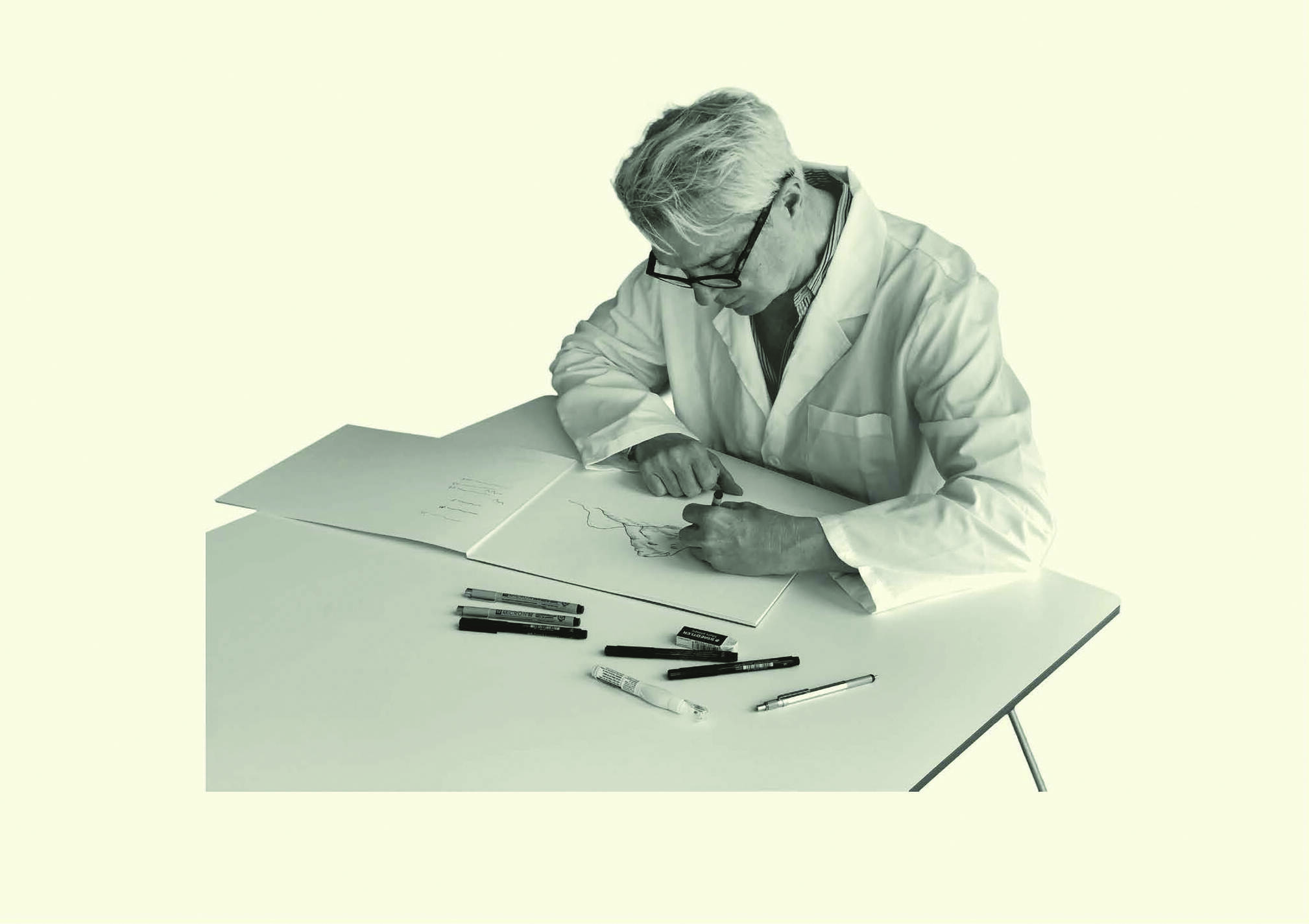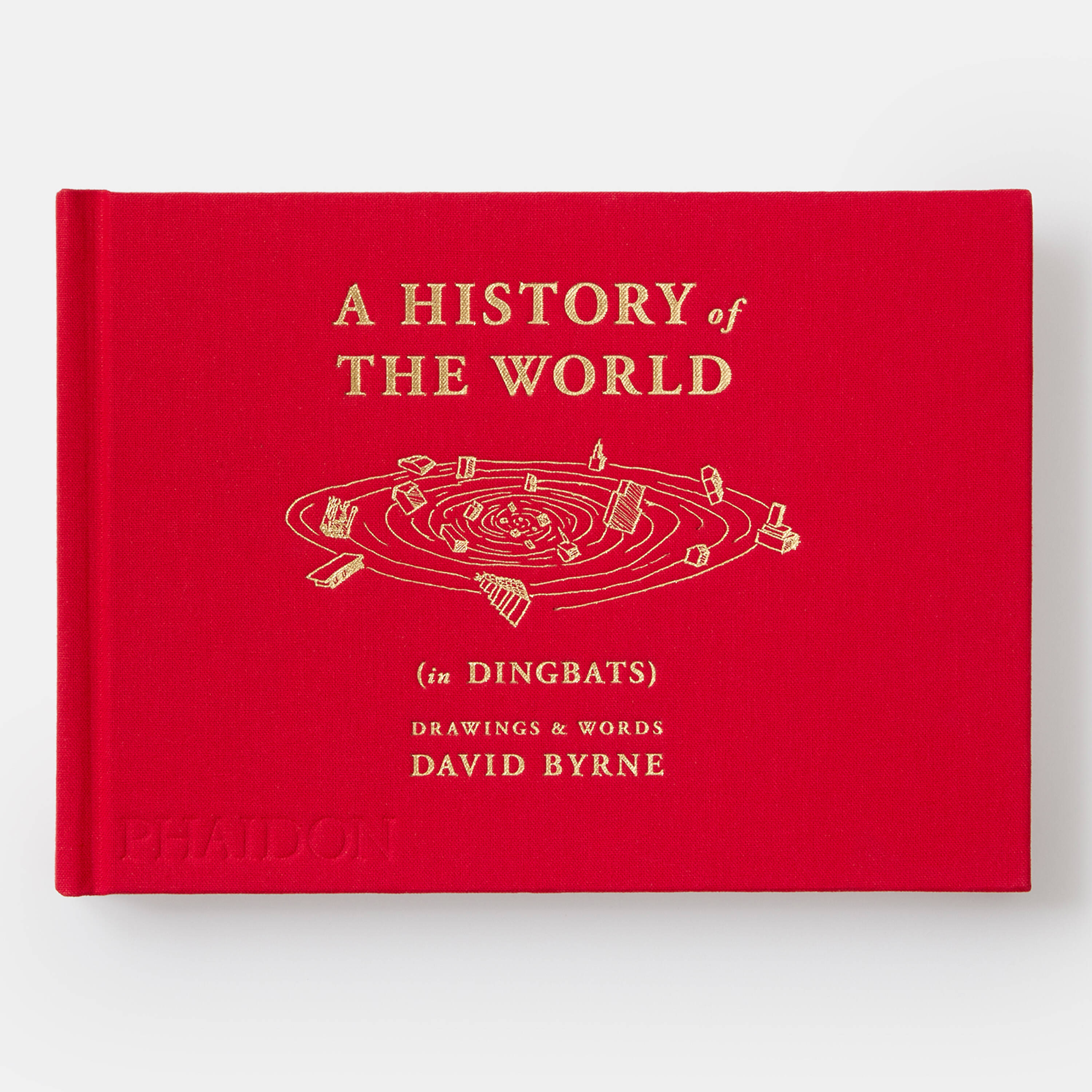
David Byrne’s Dingbats and the art of collective change
The singer, songwriter and fine artist charts a course for post-Covid life via his inimitable drawings
How did you cope with lockdown? David Byrne turned to dingbats. A ‘Dingbat’, in Byrne’s usage, refers to an incidental, ornamental glyph typesetters and printers once added to the page, to give a little breathing space for the reader in among the columns of text.
As old-style, pre-digital printing fell from favour, so dingbats evolved into enigmatic drawings that publications such as the New Yorker still reproduce today on the printed page.
Back during the darker days of 2020, Byrne spent his time indoors drawing a series of dingbats, intending to use them in an online magazine he was producing.
However, as he writes in his new book, A History of the World (in Dingbats), “as I began to draw I got carried away . . . they immediately assumed a life of their own. The editors didn’t seem to mind, and, once open, the faucet flowed.”
After lockdown restrictions eased, Bryne exhibited these drawings at Pace gallery in Manhattan, and has now assembled them for the new book.
Of course the book doesn’t cover all world history; instead these idiosyncratic drawings of trees, houses, trains, cities, people and landscapes (among other subjects) seem to capture a series of the social and psychological changes many of us experienced.
Hints of stasis, introspection, self-determination and hope can all be found in among these pictures and accompanying words (the artist composed a series of texts to head up each of the book’s chapters).

David Byrne, like many people, enjoys drawing. David Byrne / © 2022 Todo Mundo Ltd.
While many of the images can be interpreted in different ways, Byrne holds back on sharing his own, personal journey until the very end of the book. “I watched every stand-up comedy streaming show for a year,” he writes in the epilogue.
“Everything. I watched their performances on a laptop, connected to a Bluetooth speaker. (I couldn’t watch dramas; we were living in one. Likewise, anything scary—are you kidding?) I watched all of it, there they were, live in person, somewhere, once upon a time. Sometimes I laughed, other times I thought, ‘This person is talking to the old world. We don’t live there anymore.’
“In the new world the rules have changed—or at least there is the possibility of change,” he goes on. “The dogma of economic austerity has been left behind. A society that exists for all of us is imagined as a real possibility. Streets are for people. Everyone is out promenading. The way things were, the way we made things, it turns out, none of it was inevitable—none of it is the way things have to be. We can be different.”

A History of the World in Dingbats
For greater insight into the ways we have changed and might change, order a copy of A History of the World in Dingbats here.